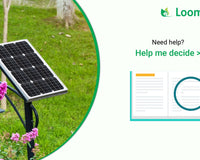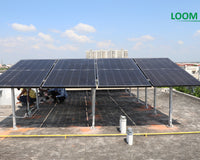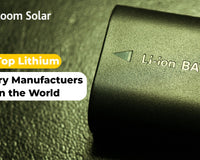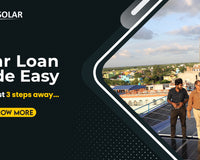A device used with solar arrays to convert the energy that is generated (direct current) to usable electricity for a home (alternating current). Each micro-inverter is connected to a single solar panel for maximum control and reliability.
How Micro inverter works?
A solar micro-inverter is one of two types of inverters that can be used with a home solar system. Microinverters have several advanatages over conventional inverters, called string inverters. String inverters are connected to multiple solar panels in a row, or string, and converts all the incoming DC energy to usable AC energy. Because the microinverter is connected to a single solar panel instead of a string of them, there are a number of benefits to this technology.
Higher Production – More cost-effective
Panels experience obstruction at varying levels due to shading from trees, leaves, dirt and cloudy days. Because microinverters operate independently, each can perform to its fullest potential. If one panel is obstructed for any reason, only that panel’s energy production will be affected. That means the solar system produces more solar power and therefore is more cost-effective.
Safer and More Reliable
Because the microinverters are assigned individually to every panel, they convert the DC energy to AC right where it is produced; unlike string converters which are converting the energy at the end of a row of panels. This means there is no high voltage DC on your roof that could cause an electrical malfunction.
This independent functionally of the micorinverters also creates a more reliable system. There are no single points of failure. If one panel goes down, the rest will stay online producing energy at their maximum capacity. Also, the microinverters can be tracked remotely allowing for issues to be pinpointed and potentially resolved without a site visit.
__________________________________________________________________
Solar Micro Inverters existed since the advent of the solar PV systems, but then due to high costs associated with manufacturing, it wasn’t popular until recently when a company enphase made the first commercially successful micro inverter M175 in 2008. Since then many established companies like SMA, Power-One (now ABB), Delta and other companies have formally launched these inverters. There are advantages as well as disadvantages of a Micro Inverter over a String or Central Inverters.
Advantages:
- Shade Tolerant: Since each Solar Panel is producing independent of other panels, the performance of a Solar Panel doesn’t affect it’s neighbouring Solar Panel. So a shaded Solar Panel won’t necessarily drop the performance of other solar panels as they work independently. This is not the case with String Inverters.
- No Air-cooling: These are very small inverters that can fit in the back of a solar panel. Because of its size, one doesn’t need to have separate cooling as central inverters. So less loss in the form of heat.
- Minimum Maintainance loss: A defective solar panel or an inverter doesn’t affect the generation of the solar output from other panels, while a defective Solar String or Central Inverter will bring the performance of the entire array to a halt.
- Remote Monitored: Typically in a Micro-Inverter architecture, output from each Solar Panel and the Micro Inverter is monitored via a communication bus, there by isolating a problem much faster than other inverters.
- Smaller Cable Size: Since output is converted from DC to AC (230V) at the back of the panel, the cable required to carry the current can be of lower diameter.
- Easily Expandable: Due to it’s modularity, a solar system can be easily expandable from single panel to multiple panels independent of each other.
- Suitable for Residential Buildings: Due to it’s modularity and it’s size, it’s very suitable for residential buildings where each panel can be differently oriented or have different shading pattern during the day.
- Easy Installation: As there are no specific restrictions on oritenation of solar panels any one can install a micro inverter solar on grid system with relative ease.
Disadvantages:
- Higher Initial Cost: The main disadvantage of a Micro Inverter is been it’s higher initial cost.But it’s cost can be justified in cases where there are technical challenges in installing a solar array (series of solar panels) or shading issues that could cause the entire system underperform.
- Extra Monitoring Device: As each inverter is independently located below a solar panel, a communication bus and a common monitoring system is required as there is on board display system like in string inverters.
- Higher Cost of Replacing: As a inverter is below the solar panel, it might be very difficult to replace the micro inverter due to existing site conditions and might require more than 1 technician on site to replace.
Microinverters have become common where array sizes are small and maximizing performance from every panel is a concern. Microinverters have been most successful in the residential market, where limited space for panels constrains array size, and shading from nearby trees or other objects is often an issue.













1 comment
Sachin kumar Dubey
8kb solar inverter I want please suggest price